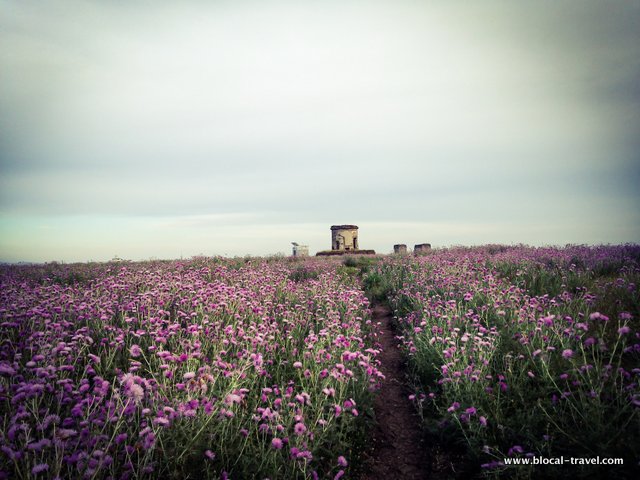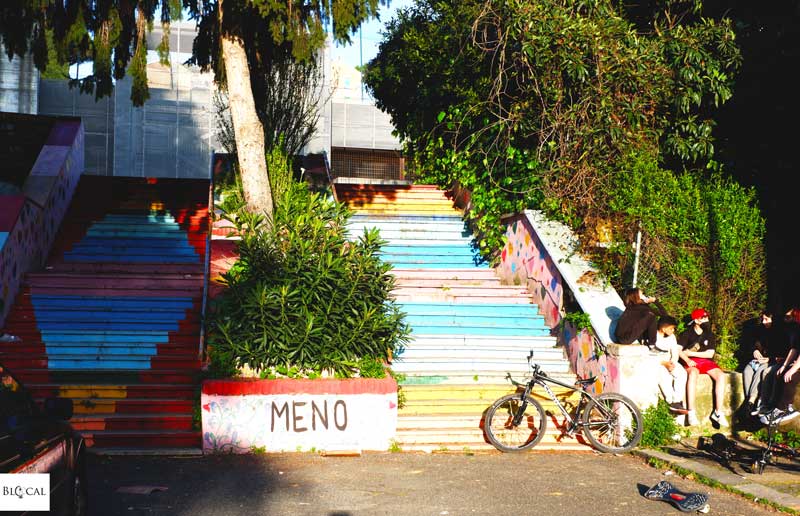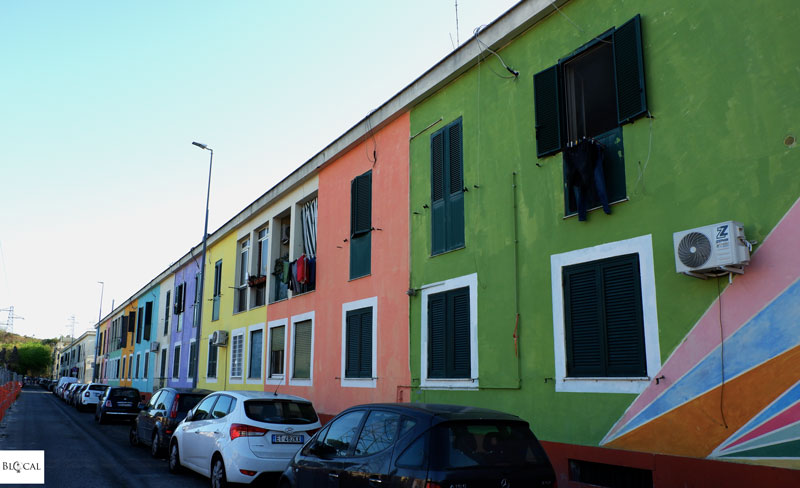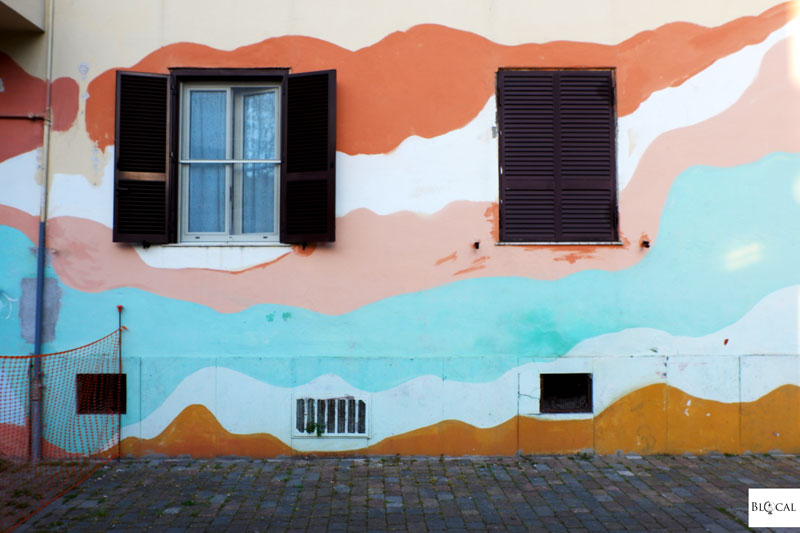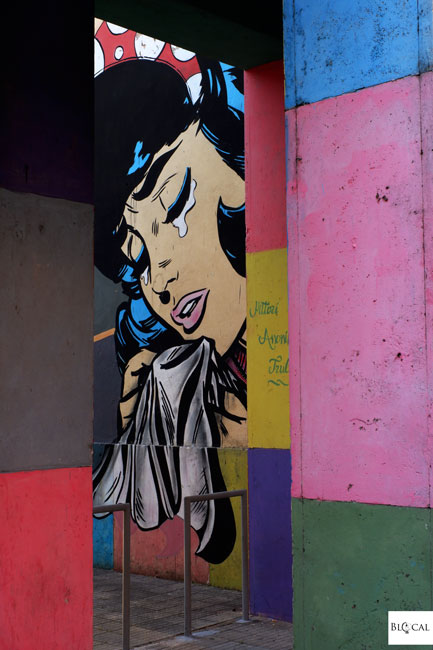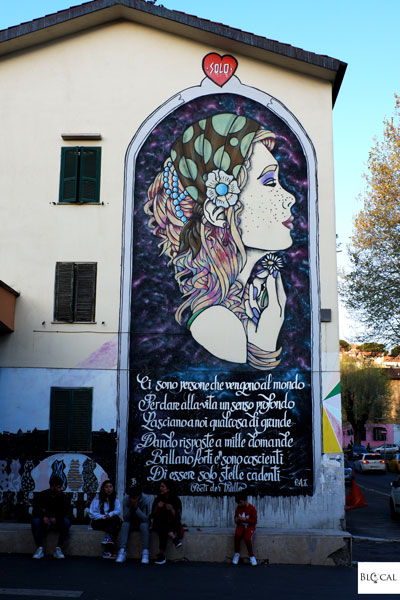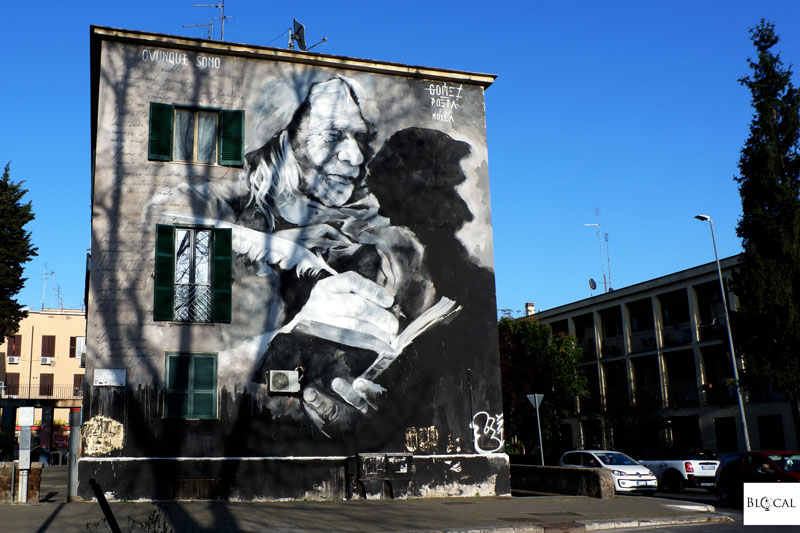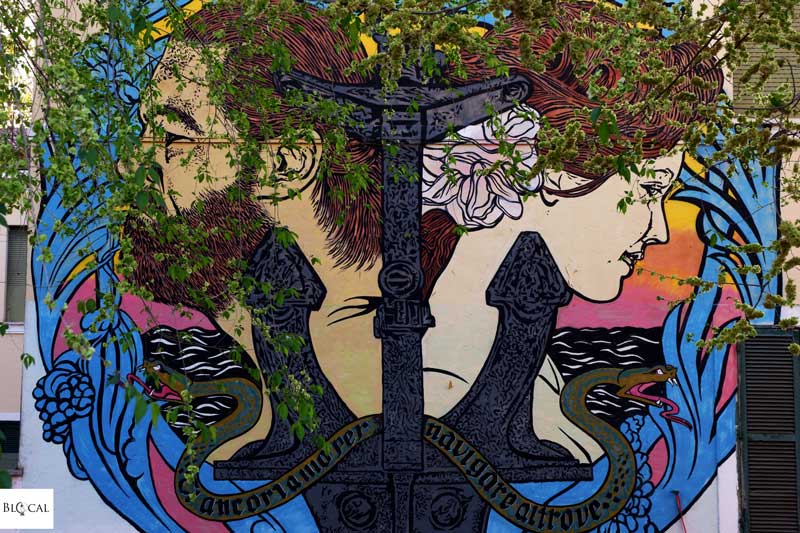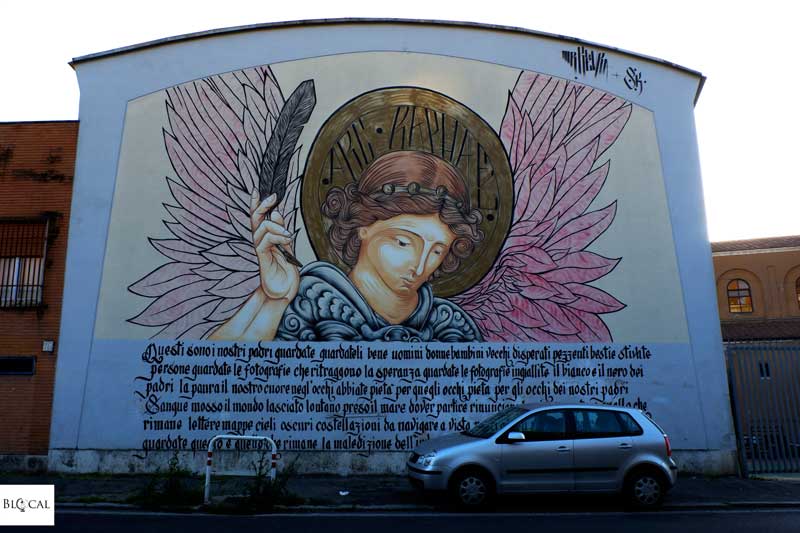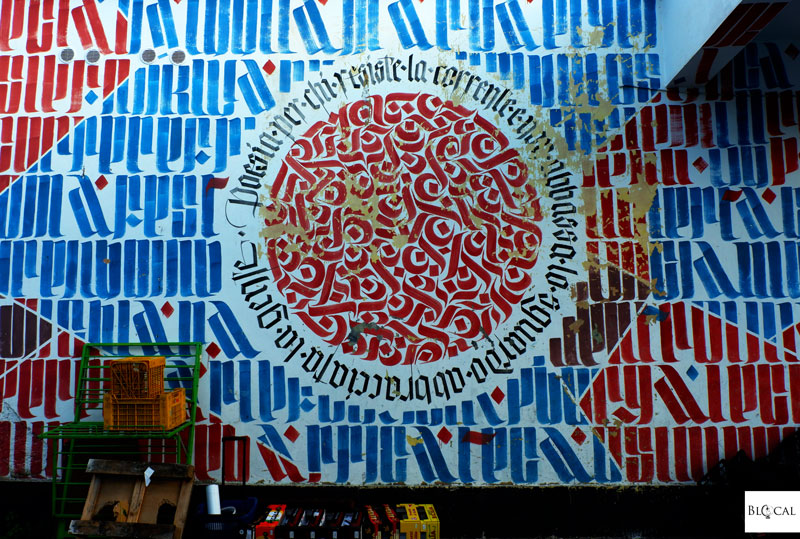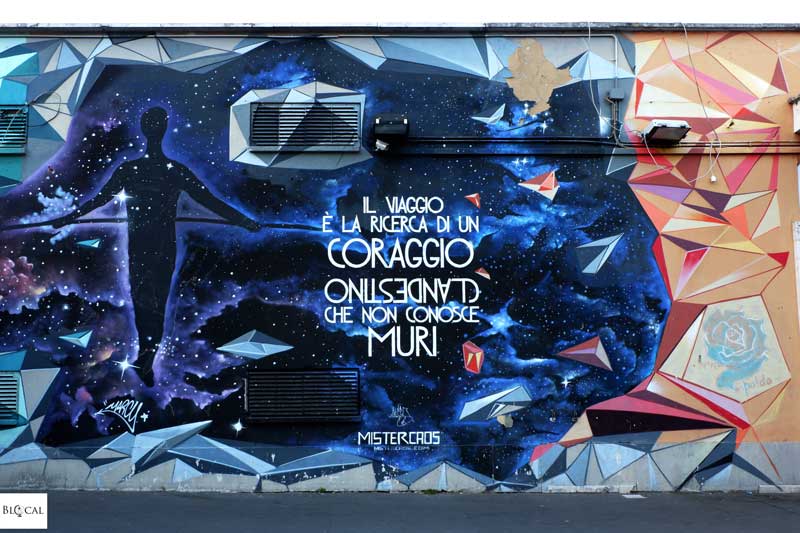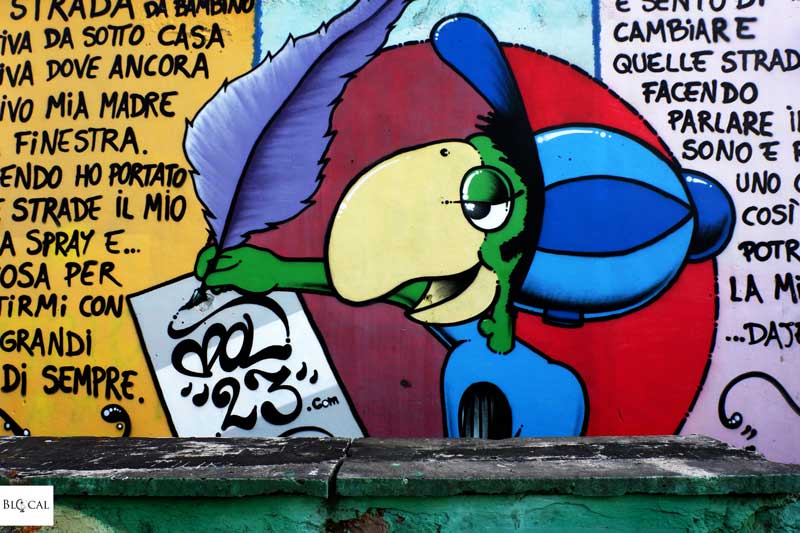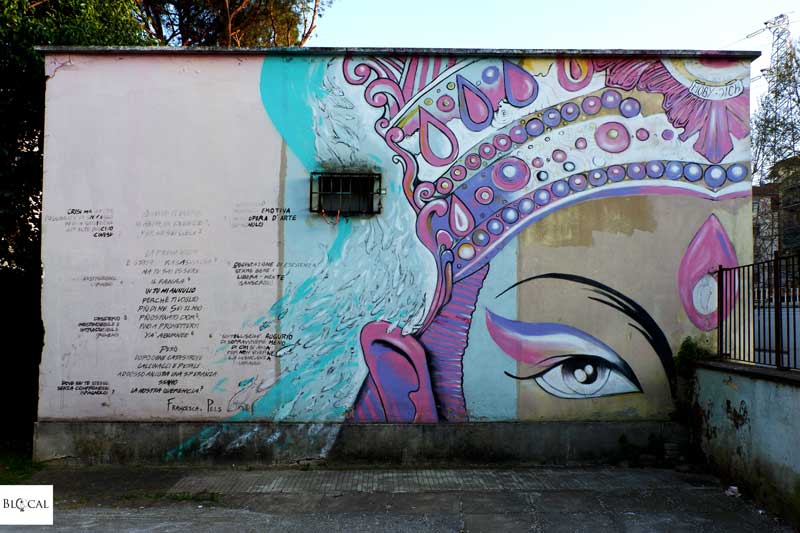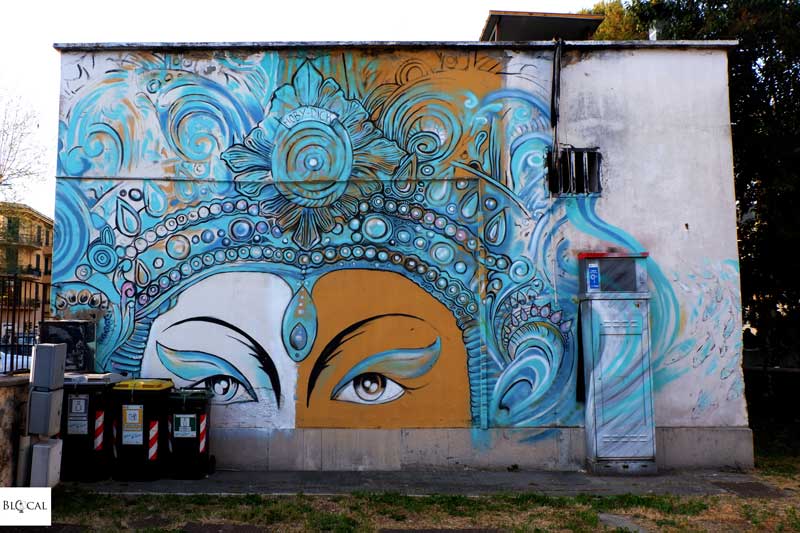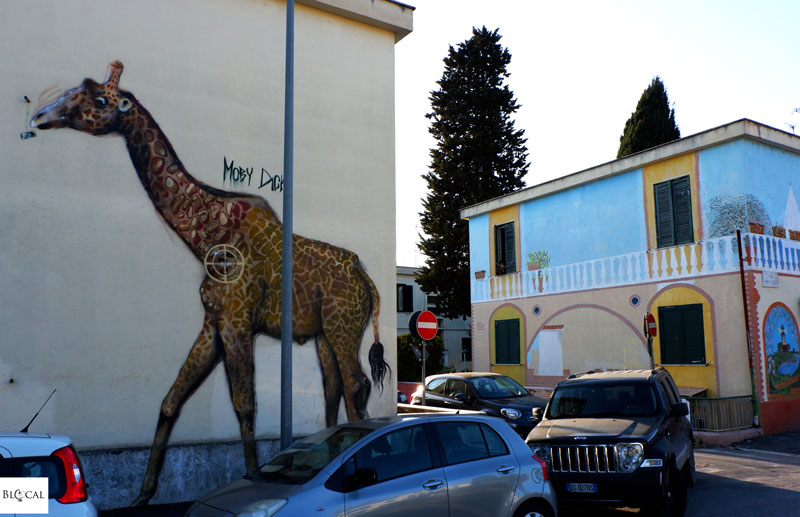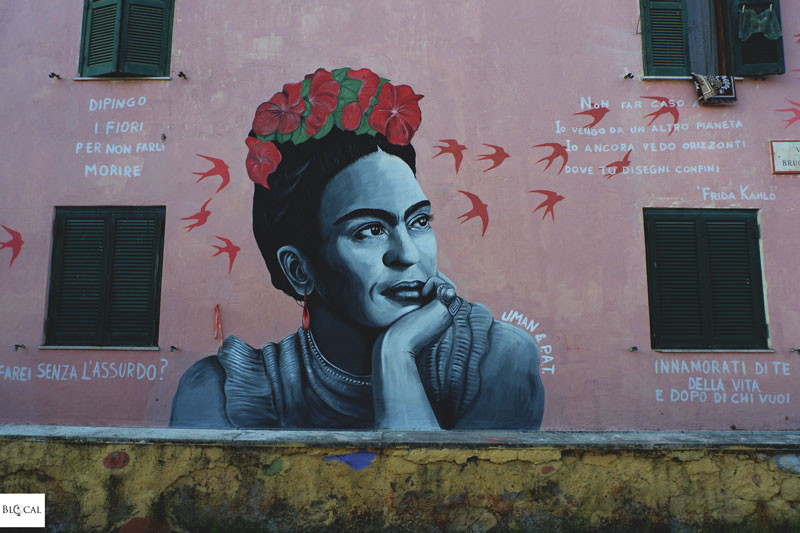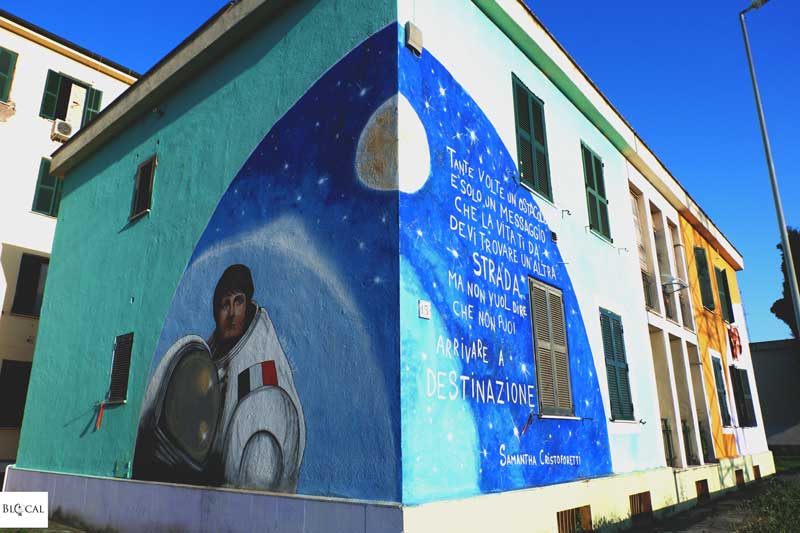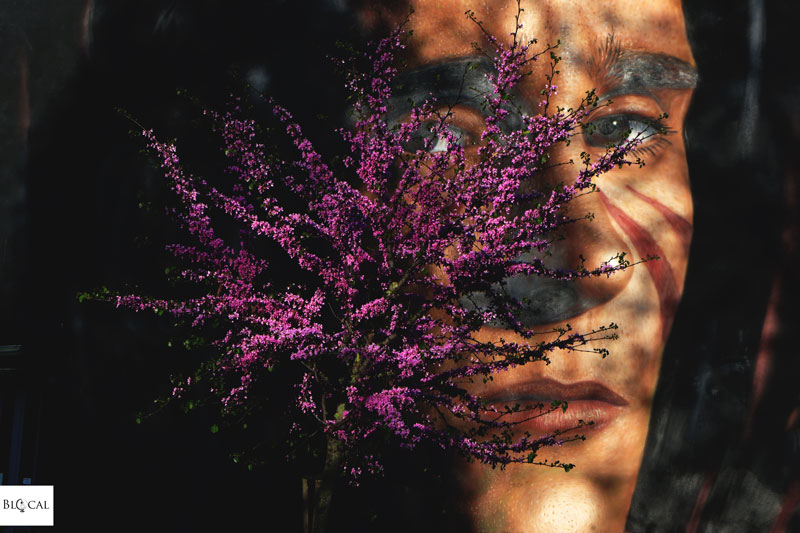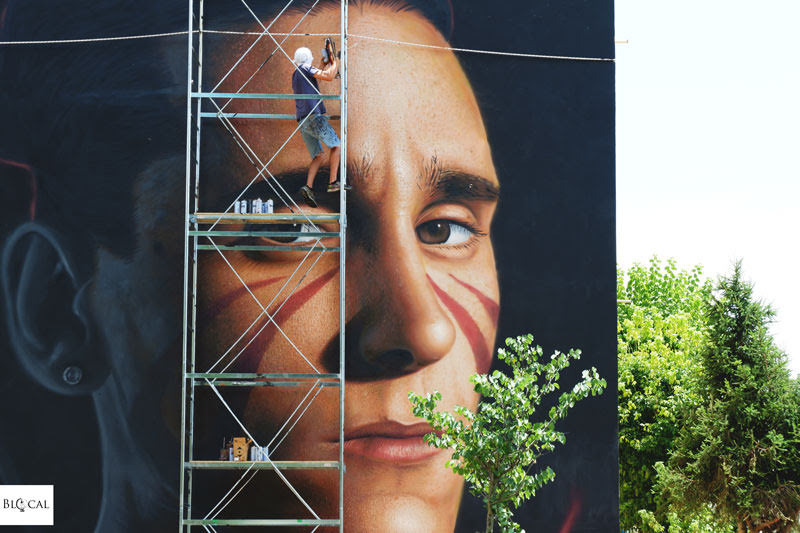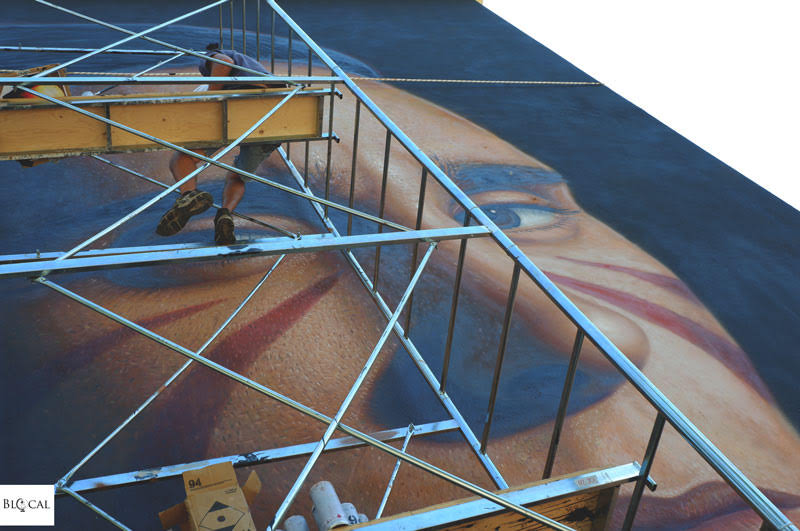I’ve been writing about the cultural revolution in the streets of Trullo ever since 2014, and each time I promise you more updates on what’s going on in one of my favorite Roman neighborhoods Today is the day we go there together, for a great street art tour of Trullo neighbourhood!
“Trullo is a place of mind” writes the Poeti Anonimi del Trullo (Trullo’s Anonymous Poets), a collective of seven authors who have been writing poems on the walls of this suburban area of Rome for nearly a decade in an attempt to bring poetry closer to the life of the ‘hood.
Trullo’s redemption started from this poet collective who, armed with markers, began writing on walls poems in Roman dialect, recalling the poetic tradition of Belli and Trilussa, while winking at Pasolini (who, by the way, shot a scene of the movie “Uccellacci e Uccellini” here in Trullo, on Montecucco hill).
Shortly after that, and with the same spontaneity and genuinity that have distinguished the Poets, the Pittori Anonimi del Trullo (Trullo’s Anonymous Painters) began painting facades, archways, yards, staircases, and benches to take over the public space that the municipality has been neglecting for so long.
The “metroromantic” gaze that turned into poetry the stereotypes on Rome’s outskirts is the same gaze that now turns a staircase into a rainbow, and a run-down wall into an explosion of pastel colors. It became how Trullo’s residents gaze at their own neighbourhood.
The vast, wild lawns where sheep and horses graze and the social fabric closer to that of a village rather than of a big metropolis are what makes Trullo the antithesis of Rome’s city center. This also applies to Trullo street art. While Instagrammable, large-scale murals painted by international street artists are mushrooming throughout the Rome’s city center. In the Trullo neighborhood, residents themselves have bought the paint, rolled up their sleeves, and started color-washing their neighborhood.
Street art murals quickly followed. The first one to appear was “Nina,” by street artist Flavio Solo, born and raised in Trullo. In his typical pop style inspired by cartoons, Solo painted the protagonist of a well-known Roman song. Next to Nina’s face, which recalls Roy Lichtenstein’s crying women, one of Trullo’s Anonymous Poets (Er Bestia) wrote some very powerful verses.
This first, successful synergy between street poetry and street art in the Trullo area was the spark that brought to Trullo, in 2015, the third edition of the International Street Poetry Festival (previous editions were held in Milan and in Genoa, respectively in 2013 and in 2014). Street poets coming from all over Italy paired up with street artists from Rome. Together, they created “illustrated poems” that are still visible on the walls of Trullo, a unique festival concept that undoubtedly set Trullo’s murals apart.
- Read also: “Street Art in Rome: A Guide to Ephemeral Art in Italy’s Eternal City” the ultimate travel guide to the top 26 neighborhoods to find street art in Rome, with handpicked local tips to eat, drink and shop in Rome like a local.
Where to Find Street Art in Rome:
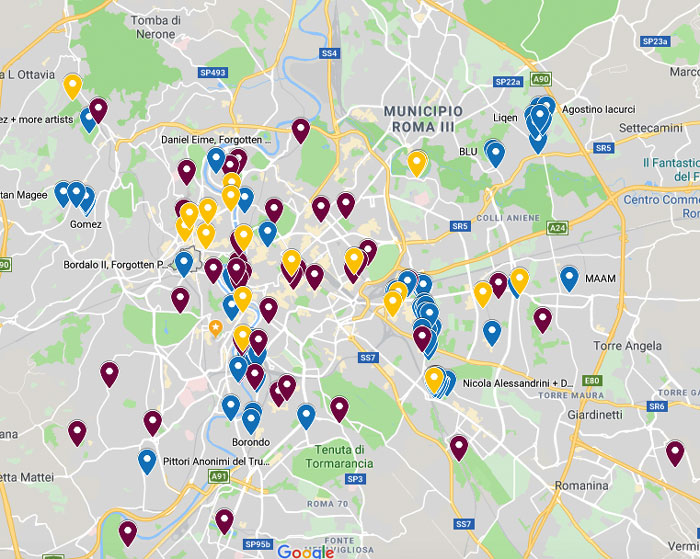
Among the street art created during the festival, we find yet another mural by Flavio Solo: the portrait of Laura, a girl from Trullo that “turned into a shooting star,” as the collective Poeti del Trullo wrote next to her countenance.
Another portrait standing out from Trullo’s large-scale murals is the one of Mario D’Amico, founder of the collective Pittori Anonimi del Trullo. It was painted by Gomez, while the verses alongside it are by Poeta der Nulla.
On a school in Via Ventimiglia, Diamond created one of his murals in the art-nouveau style next to a poem by Poesie Pop Corn, reading: “Ci ancoriamo per navigare altrove” (We anchor to sail elsewhere).
A popular mural in the Trullo neighborhood is “Arc Raphael” by Mr. Klevra, the Roman street artist with a typical Byzantine trait. The angel stands next to a poem that Alfonso Pierro wrote in honour of his father. These moving verses were transcribed on the wall by Sugar Kane, a master in the art of calligraffiti, which is a style blending graffiti with the ancient art of calligraphy.
An impressive example of the calligraffiti style is at Trullo’s market: Ivan’s verses, which are all around the archway and were graphically interpreted by calligraffiti artist Piger – what a fantastic Milanese duo!
Still around the local market there is Marcy’s mural, making a galactic scenario for Mister Caos’ poem, which is about the courage of an authentic journey. A bit further on Via Campagnatico, Kenji painted a fish and a boat to go with a poem about looking into each others’ eyes written by Poeti della Sera.
Rome’s graffiti pioneer BOL23 painted his iconic parrot in the midst of a text through which he tributes the street and his own mission as a street artist.
Cerino painted a vibrant piece depicting an eye; the “mirror of the soul” as the nearby poem says.
Three more Trullo street art pieces were painted by Roman street artist Moby Dick. During the festival, he joined forces with author Francesca Pels to create two mirroring murals featuring love words borrowed from cultures all around the world.
Later, on the occasion of “World Walking Day 2018”, Moby Dick came back painting on the walls of Trullo, this time highlighting one of his dearest themes: the environment. This street art piece gives voice to the black giraffa killed a few years earlier by an American hunter, who provoked a scandal for bragging on social networks about killing a rare type of giraffa.
More works of street art around Trullo were made in the following years. Together with the collective Pittori Anonimi del Trullo, the artist Uman painted several portraits of influential women, from Frida Khalo to Greta Thunberg, and from Samantha Cristoforetti to Gabriella Ferri. All these portraits are on Via Ventimiglia.
Still in 2018, the Neapolitan muralist Jorit Agoch, who is renowned all around the world for his hyper-realistic style, portrayed on Via del Trullo actor Andrea Carpenzano playing the part of Christian Ferro, a young football player born and raised in the Trullo neighborhood.
Read also: Interview with Italian street artist Jorit
Jorit Agoch’s mural was realized during the shooting of “Il Campione,” a movie by Lorenzo D’Agostini. As part of the script, the mural by Jorit Agoch was vandalized but, by popular request, Jorit came back to Rome to restore his mural. Which is when we met, but that’s another story…
Where to Find Street Art in Rome:

Bonus Track: Meet Mario D’Amico and the rest of Trullo’s anonymous painters in the documentary movie RKM:
